Text by Patrick Bell.
1955 was a banner year for the American car industry. Most manufacturers had completely new styling, and many had new V8 power plants. Due to advancing technology they were easier to drive. All this contributed to a record breaking year. Today we have some photos of the ’55 models in transit, so let’s check on what was coming to US dealers for that year. As for the trucks, I am going to let you readers fill in those details, as I know we have many experts in that area.
On to the cars.
We will begin with four examples of the best selling car from the best selling nameplate during this year. These all new Chevrolets in a Bel Air 4 door sedan body style looked the same down to the color. The top two had the new “Turbo-Fire” 265 V8, and I would imagine the bottom two did as well. The truck was out of Flint, Michigan, so I presume this was one of the Michigan factory sites.
And here was a load of Fords, which were the second best sellers and also had a major restyle. On the top from the left, a Customline Tudor Sedan V8, Country Sedan wagon, F-100, Custom Ranch Wagon, with a Fairlane Club Sedan V8 and another Customline Tudor on the bottom.
The restyled Plymouth came in fourth for the year and this image shows a fleet of loaded trucks full of them, with one lone Chrysler New Yorker Deluxe St. Regis in the center. The four door sedan on the right was a six cylinder Plaza model, while both wagons on the next truck were also Plazas. The one on the left had one of the new “Hy-Fire” V8’s, while to the right the hood emblem is not visible, so it could have gone either way.
Third place in the sales race went to Buick and this stylish trailer loaded with Riviera style hardtops had stopped for a photo opp. Two doors were on top, with a Special on the left and a Super on the right. The new four doors rode on the bottom and were either Special or Century models.
A load of wagons from Ford, with three Country Sedans and one Country Squire. All of them had V8 power.
This is how I remember cars in transit, with the hub cap/wheel covers not installed. These Studebakers should have a Studebaker truck for a hauler. I guess they were all busy. It looks like there were three Commander Deluxe Ultra Vista 4 door sedans and two Champion Deluxe Coupes on this truck and trailer.
Two loads of Oldsmobiles making their way through town. Windows are down so I am going to say summer of ’55. I see three other ’55 models in the photo; two Ford wagons, one on the road and the other to the right in a parking lot, where next to it was also a Chevrolet. I will take a wild guess at location; College Park, Maryland.
Mercurys were on board a new looking truck with a not so new looking trailer. There were five Montclairss; four Coupes and one 4 door sedan, and right behind the truck cab was a basic Custom Coupe. The photo was taken on 9-7-55, so these were among the last of the ’55s.
Kenosha Auto Transport had a load of new Nashs ready to deliver somewhere. Nashs from this era were difficult to tell between a Statesman and the Ambassador because the only difference on the outside (besides the nameplates) was the wheelbase. On top from the left I will go with a Statesman Super, Ambassador Super, and an Ambassador Custom. On the bottom an Ambassador Super or Custom, and the one on the far right I can’t determine as the cowl between the front wheel and front door (where the seven inch difference is) was not visible.
Six of Ford’s new Thunderbirds with varying wheel, tire, and fender skirt combinations were loaded and ready to go with a Convoy Company custom cabover providing the power. Paul previously led the discussion on this rig HERE.
Pontiac had an all new body as well as a new “Strato-Streak” 287 V8. There were at least two on this rig; the first was a Star Chief convertible, along with a 4 door sedan that could have been any of the three trim lines.
A well dressed young man posing in front of perhaps his dad’s truck with a “Daring new, dazzling new” Dodge on top. The body was new, but the engines were largely carryover with the exception of the “Red Ram” V8, which was bored out to increase the size to 270 cubic inches.
And we will end where we begun, with another Anchor Motor Freight load of Chevrolets. This one was later in the year, as the new “Task Force” pickups were not introduced until March 25th. The pickup was a 3100 series with a six cylinder, and the cars behind and below it were both Two-Ten 4 door sedans, and the dark colored one mostly hiding was a Two-Ten 2 door sedan. I have watched many transit drivers unload cars and marveled at how they back down those narrow ramps without missing a beat. I am sure they got plenty of practice.
Thanks for looking back with us and have a great day!
















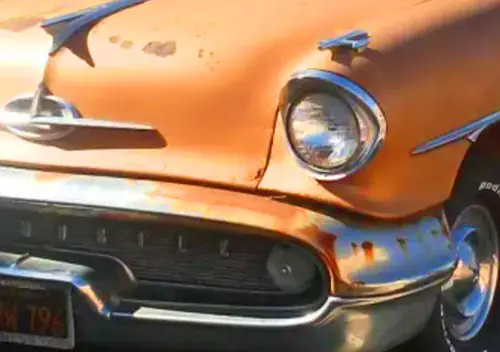
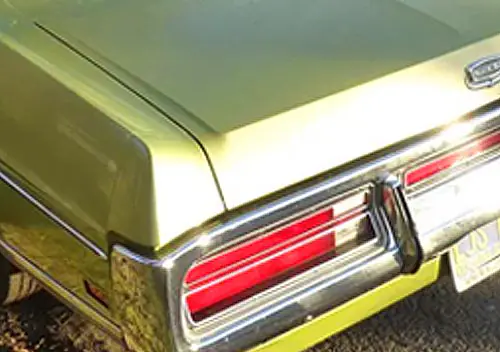
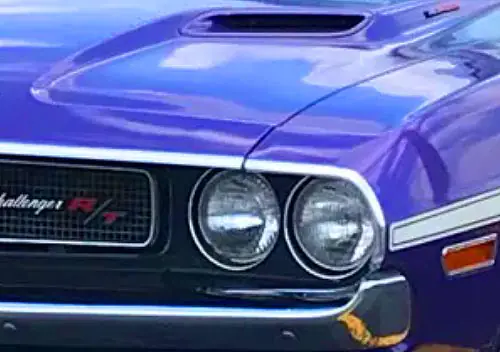


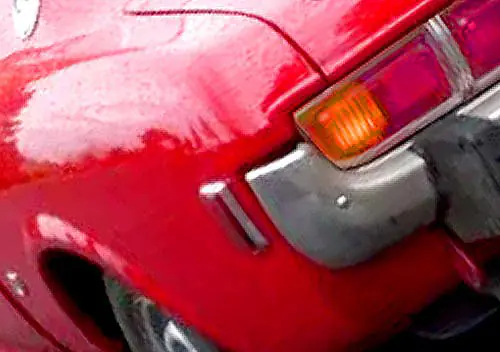

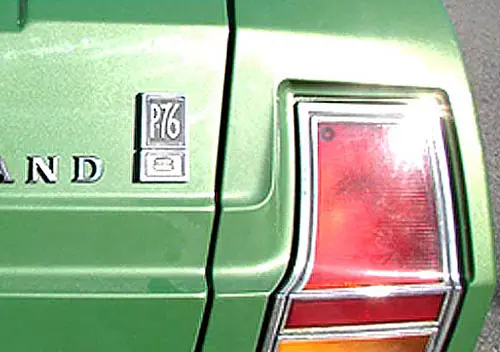
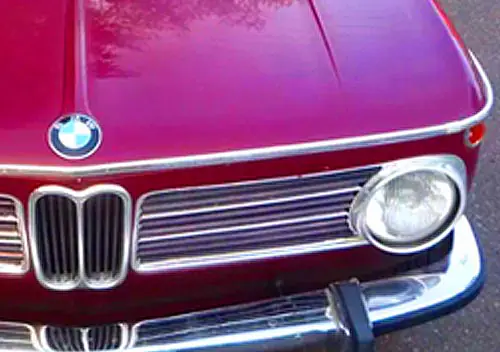

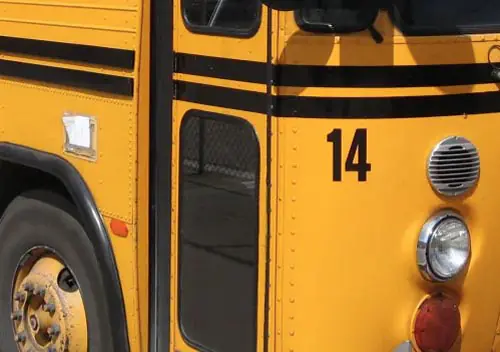
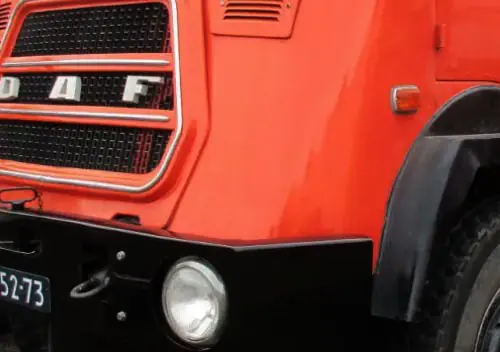
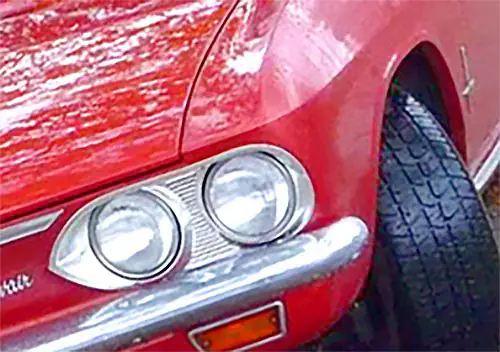
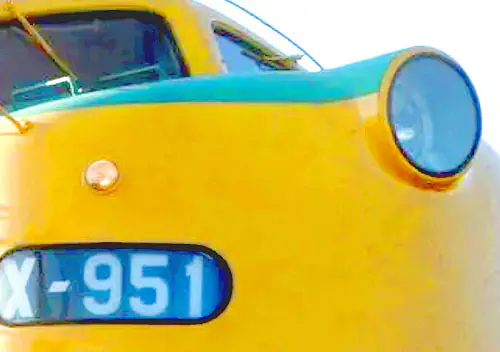
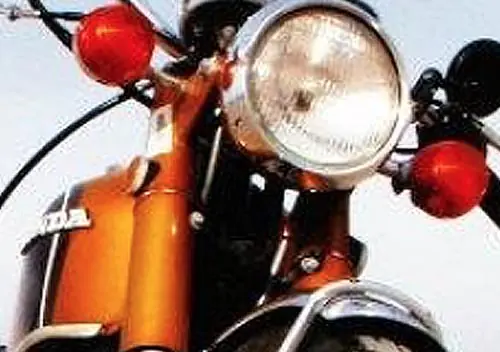
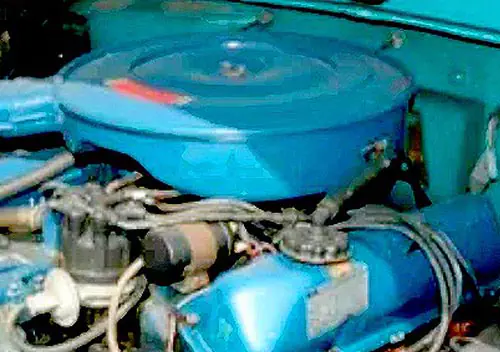
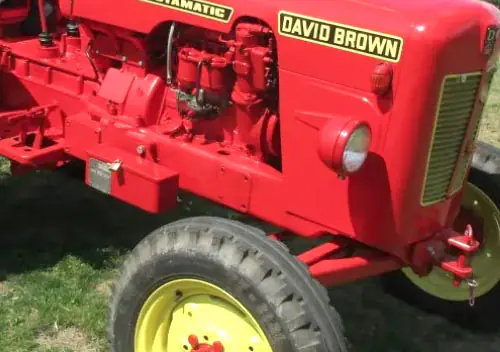
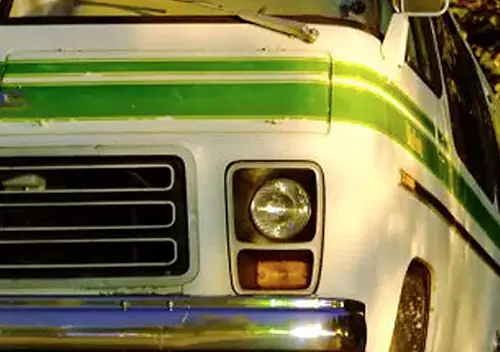

Seeing the Anchor Motor Freight rigs brings happy memories to me.
My Dad drove for them (and variously named versions through mergers, etc) from the mid 1960s through the mid 1980s.
I remember when we moved from upstate New York to Flint and, a few years later, to Lordstown, OH.
Occasionally, when the weather was good, Dad would bring a couple drivers who didn’t live near the plant home for a cookout. “Beef, beer and bull” as Dad would put it.
In the lead image, I’m wondering if at least one or both of the `55 Chevy Bel Air sedans on top are the special “50 millionth” commemorative models painted gold. At least 2 have been found in junk yards, and they originally were all gold and not two toned. They also had a brown & tan interior not available on other models. Being a B&W photo it’s hard to tell what color those are, but it had me curious.
As for the transport of `55 Mercurys, a heavy sigh here as I don’t see a single ultra-rare Sun Valley glass top, but I understand why. By the 9/55 date of this photo, production of Sun Valleys had already halted.
No manufacturer would be caught dead with a competitor’s truck hauling their cars. As we can see, the Studebakers and Nashes are hauled by Internationals. Great photos. Thanks. Does anyone remember new cars being delivered before new model announcement date? Those cars were under wraps to keep the public surprised on THE BIG DAY – and what a big day it was each year. Well, except for Packard. Their new model announcement was on January First and usually was an elegant newspaper ad, very conservative.
Photo #5: A load of wagons from Ford
The top front Ford wagon so reminds me of the movie, “The Russians are Coming, The Russians are Coming” with Carl Reiner and Eva Marie Saint. The “Whittaker” family drove to Cape Code in a mid-50’s Ford wagon stuffed to the brim with family and vacation supplies.
A mid 60’s screw ball comedy classic!!
“Studebakers should have a Studebaker truck for a hauler.”
I bet Kenosha Auto Transport had a nice little niche business of hauling Nash cars east from Kenosha and picking up Studebakers in South Bend to take west on the return trip. The International tractors didn’t offend either company.
So many beauties .
I’m generally a ‘Bowtie Guy’ but a two door Ford wagon would be hard to pass up .
Thanx for the movie comments, I well remember seeing “The Russians Are Coming !” in the theater, along with other light comedies like “Who’s Minding The Mint” so many frothy movies I remember all these decades later .
-Nate
What is “The Accident You’re Concerned About… Won’t Happen!” on the Buick-hauling truck supposed to mean? That you don’t have to worry about the truck crashing into you because they’re driving carefully?
I lived in College Park, MD in the early ’80s and again in the ’00s, and remember it from the ’70s. The photo of the Oldsmobiles does look vaguely like Rt. 1 (which cuts through the city) but I don’t think it is, as I don’t recognize anything I see. Rt. 1 in that area is two lanes in each direction with a center turning lane between them, but there doesn’t appear to be a center lane, and I do see lots of empty road at the left – enough for another lane – that Rt. 1 doesn’t have. There weren’t many Sinclair gas stations in the DC area, nor do I recall an Oldsmobile dealer in College Park (or the next town Riverdale where the car carrier appears to be headed). There did used to be two other GM dealers there, Fields Buick and Lustine Chevrolet.
Ironically, I was just in that area yesterday, for the first time in about 20 years.
The main thing that leads me to believe it’s College Park is the sign for the Park College Diner. The sign appears identical to the one in the photo below… but other than that, the area looks nothing like modern Route 1!
I’ll be darned. The Park College Diner (why not the College Park Diner?) was indeed in College Park, MD at 8205 Baltimore Ave. (aka Rt. 1), where a McDonald’s is now. Despite what I’m reading online, McD’s didn’t directly replace the diner; it was previously a Roy Rogers going back to at least 1978 and McDonalds used to be across the street. The PC Diner was in College Park at least through 1962. Interestingly, it still exists – it was moved to a new location in Dorcaster where the owner had a farm, then moved to Ironsides, where as of a few years ago it was in storage.
There are several shots of the diner online. Weird thing is in the photo with the Olds car carriers, I see the sign but don’t see the diner itself, although it’s not far from the sign in other photos. What confused me was that there’s long been a place on Rt. 1 called the College Park Diner but it has no connection to the Park College Diner and looks very different. More here: https://patch.com/maryland/collegepark/the-original-college-park-diner-1940sii
Interior:
I think the diner building is the one in the Oldsmobile photo that has a sign beginning with “Air…” on the building itself. I assume it says “Air Conditioned” – the building does look a bit different than in the older photos, so it may have had some alterations.
And apparently, “The Accident You’re Concerned About… Won’t Happen!” was an accident-prevention slogan. The trucking company won a competition for coming up with that slogan, and used it on its trucks for a while:
My first thought was: If you’re trying to decipher this hard-to-read sign while passing the truck, an accident you WEREN’T concerned about will happen right now!
A great collection of fascinating pics, as always. Thank you! Love viewing the wear and tear on these stoic haulers.
I drove for Anchor for 11 years, good times for sure. We loaded/unloaded in all kinds of weather, from ice storms and blizzards to a hurricane. Got to see some rare stuff too,
I found the best way to draw a crowd unloading was to unload off the tractor head ramp.
I remember one Holden model launch with a selection of models hidden away before the launch I walked past and looked the new HQ model the range was all Aussie assembled to NZ spec and the primrose staionwagon was in a our driveway that nite, it seemed pretty cool at the time.
Thanks for putting this together. These pics are great to reflect back on!
The Nash load looks bulky and unstable, especially the one mounted over the cab. As the driver, I’d be wary..extra bonus, perhaps?
Also, the first batch of Fords have the drivers side windows down. I assume they would be closed before transport!
Rich and Patrick, Thank you for the wonderful pictures. I really love those old trucks. I noticed some of the carhaulers have more than one mirror per side, must have been a real pain backing those rigs up. Noticed most of the cars don’t have mirrors, probably in the trunk to be installed by the dealer, so they don’t get damaged in transport. Bet it was weird driving with a car above your cab and real fun on corners.
Outside driver-side mirrors were optional if they were offered at all. Our ’56 Olds 88 had PS, PB, and day/night interior mirror, but no outside mirror or seat belts until 1970.
Hey JoAnn! It’s good to see your smiling comments here and there.
I’m no expert, but maybe can add a little info about the trucks.
Lead image, 54/55 Chevy 5100 powered by a 150hp 261.
F800, these were powered by a 317 Lincoln engine.
Dodge had a letter system to designate GVW that I’m really not good with, they were powered by a 200hp 331 Hemi.
55 LFC, Low Cab Forward Chevy, again with a 261.
F700 stretched and loaded down, looks like a 40/41 Ford wrecker in the background.
IH R190 powered by an RD450 more than likely.
Another 55 Chevy with what looks like a52/53 6400 Chevy behind it.
Again another F800 Ford, boy that’s aload on the steer axle!
IH R model COE.
Custom built Ford as per the attached story.
52/53 GMC probably powered by a 302 6 cylinder, they made bigger gas and diesel engines but they usually went into the 600 series and bigger trucks.
Another Hemi powered Dodge, beside the usual 5sp x 2sp rear a 3sp aux trans was available.
54/55 5100 I think the Anchor Motor Freight name came from anchor meaning dead weight, by the time I worked on them in the late ’70s that’s what most of them were. Of course by that time they were Detroit powered C90s and these trucks were a distent memory.
Thanks, Jim! I thought you might be willing to add some of your expertise.
This seems to be the time when the haulers were experimenting with larger trailers, tho GM is still hauling only 4 cars. Some of the others were hauling 5 to 6. Still a far cry from today’s 9 cars or more. Maybe the union for the GM’s hauler was stronger than the others and insisted on only 4 cars. There are more drivers needed (who pay union dues) that way.
Most likely it had to do with length limits in various states.
I though it was neat that the new car haulers usually had trucks from the same manufacturer of the cars they transported. Throughout the 60’s and 70’s the most common place to see Dodge big rigs was hauling Chrysler products.
Yeah, I was wondering on the why for so few hauled at one time. Was it a lack of power, I mean the engines cited were I think all gas, a far cry from today’s 600HP Diesels with 2000 foot pounds of torque. Or weight limits of the day? Or what?
What caught my eye was the variety of trailer styles involved. Fixed decks with movable ramps, movable decks, skeletal-looking rigs and semi-enclosed styles like the one with the Buicks. And the rigs with the separate carrier for one car over the cab roof – I wouldn’t want to be the one backing that Nash up there!
The lead image appears to have been taken outside of the GM Flint Assembly plant – which is where those Chevys were made. That front building is still standing, on Van Slyke Rd.
Google StreetView link:
https://maps.app.goo.gl/KiUDZQh9HJaRAy5P8
Studebaker was South Bend Indiana… International was Fort Wayne Indiana….The hauler and the cars were Hoosier Proud
I think the relative shortness of the trailers, and the lower capacities, was directly related to the differing trailer length restrictions in many states. Read about this somewhere, perhaps even on this website….
The Flint, Michigan GM complex is where my old ’90 GMC Suburban was built (GM Truck and Bus plant) and my GMT 400 Crew Cab was built there as well. The GMC 270 and 302 sizes were used in medium duty trucks; the 228 and 248 in the light duty pickups and Suburban Carryalls. 302 Jimmys are prized now for building old school hot rods and Lakes speedsters.
The Dodge Carhaulers are 1948-1950 going by the grille, split windshield and Pilot House cabs, with the exception of number 39. Number 39 has no hood ornament and the upper bar on the grille crowns upward and the lower grille bar has a break in it for the round signal lights making it a 1951-53 model year. This grille would have a badge in the center of it saying “Job-Rated”. Note the lower grille bar is missing from number 8. I believe they all are powered by L-head 6 cylinders. Dodge came out with their V8 Hemi engine in 1954. Models range from H to V depending on wheel base and GVW which I can’t determine from the picture.
Still got that yardstick? The 265 flat head was good for 130hp, 140hp with twin carbs. (kinda like old times, eh)
In Hawkes Bay, New Zealand, i had left behind , a 1955 , Ford Customline. ( wrongly , sadly regretted that ). The 1957 waz the model to be wanted.
I would hawk the back lots of the dealerships back in the 50’s to get a glimpse of the new models before introduction day. Usually on a Sunday because they were not open in Pennsylvania due to blue laws.
The ’55 Studebaker sedans aren’t the Ultra-Vista models. The sedans on this trailer are the early production cars.
As a side note, it appears that Studebaker learned from the fiasco of the launch of the ’53s that they need to do pilot production with a major change. The Ulra-Vista sedans were put into production as early as May of ’54 at the Vernon, CA plant.
I have friend with a ’55 President State Ultra-Vista that was built in Vernon in May ’54.
What a lovely collection of photos! My antique cars have always been 1953 through 55 Studebaker and Plymouths. I still own and show a 55 Plymouth. Club records seem to show that If exports sales are included then Plymouth outsold Buick for a solid third place in 1955. If you add the Dodge-badged Canadian Plymouths with Dodge “front clip” then Plymouth was indeed 3rd behind the two leaders. Great year for autos!